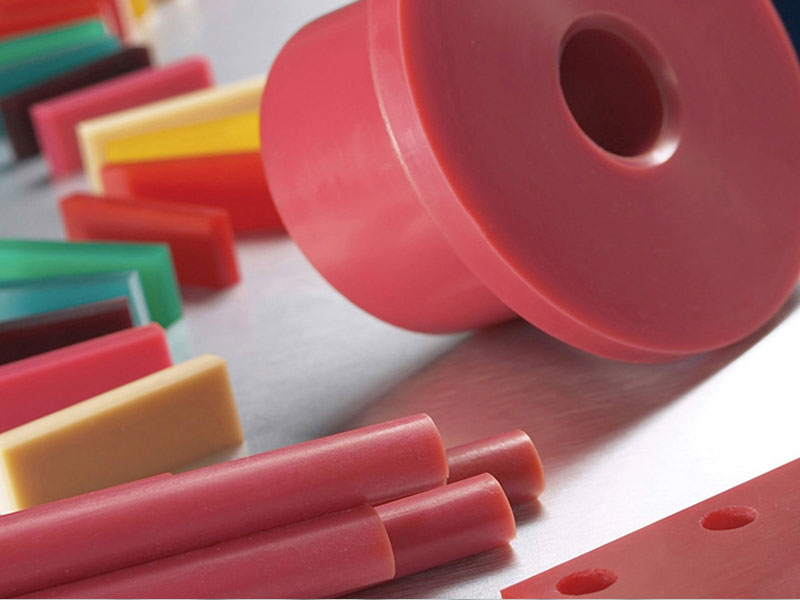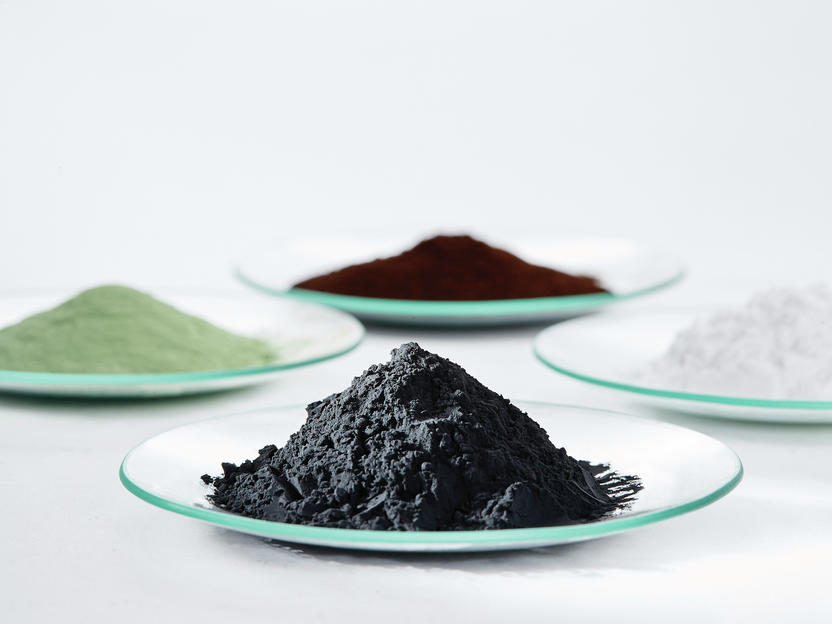PU Elastomers: Ongoing trend of replacing conventional materials for various industries

The creation of plasticization of PVC by B.F. Goodrich scientists in Akron, Ohio, launched the history of thermoplastic materials in the 1930s. This discovery piqued people's interest in flexible polymers, which led to the development of blends... Have a rubber-like appearance and feel when appropriately manufactured, and bridge the gap between liquid plasticized PVC and typically cured elastomers. As a result, they can be considered the forerunners of today's thermoplastic elastomers.
TPEs can be found in several industries
Consider how antique washing machines have evolved over the years, with softer curves and more appealing design aspects. The usage of thermoplastic elastomers in product development has resulted in this shift.
TPEs are employed in a variety of industries, including consumer goods, industrial, medical, and healthcare, among others. Because TPE goods are generally less expensive than the alternatives and can be recycled, you'll see them replacing materials like silicone, rubber, and PVC. Because of their flexibility and adaptability, TPE materials provide design flexibility.
TPEs can also be found in medical devices, where they are used to replace alternative materials. TPEs have similar properties to natural latex rubber, however, unlike rubber and PVCs, they are non-allergenic. TPEs are safe to use in medical, dental, and surgical applications without inducing latex sensitivity in people who are allergic to latex. TPE is ideal for usage in the food and beverage sectors because of its non-allergenic characteristics and ease of sterilizing.
Polyurethane Elastomer - A Dynamic Material
Polyurethane Elastomers come in a variety of shapes and sizes. They can be tough, resilient, long-lasting, and powerful, stiff, flexible... They can also be vicious as well as elastic. An elastic polymer, which is frequently reduced to the elastomer, is the technical word for a polymer that has both viscosity and elasticity.
Because of their exceptional resiliency, polyurethane elastomers have begun to be used in the production of a variety of automotive and machinery parts. Fenders, fascia, trim, interior and external vertical panels, doors, chassis fairings, and window surrounds are all made from polyurethane elastomers. They're also commonly found in tires and wheels as a component material. Elastomeric in nature refers to a produced part that comprises elastomers.
Polyurethane Elastomers Have Many Advantages
- Elastomers provide the most durable and damage-resistant molded products due to their elastic nature. Heat, oils, chemicals, abrasion, collisions, harsh weather conditions, and natural wear and tear are just a few of the elements that might cause them to distort.
- Elastomers are a good choice for parts that will frequently experience high speeds, such as tires and body panels of automobiles and equipment, due to their excellent tensile strength and tear resistance. For years and years of continuous usage, elastomeric parts will stay robust, functional, and even visually beautiful.
- Elastomers are also extremely moldable, stable, and non-tacky, allowing the manufacture of big or complex pieces. Elastomeric parts can be extremely detailed and customized to meet the most exact customer requirements.
- Polyurethane elastomers are also non-toxic and pose no health or safety hazards to anyone who comes into contact with them. Elastomeric parts are halogen-free, nontoxic, and do not release smoke, fumes, or volatile organic compounds (VOCs), which can harm the environment as well as create respiratory problems in individuals who breathe them in.
Polyurethane Products in Common Use
Seating, bedding, and furniture
Polyurethane products are frequently molded into foam, which can be used for a range of human comfort applications. The density, stiffness, longevity, and quality of this foam can all vary. The top-of-the-line robust luxury foam is normally kept for bay window cushions, while softer, temporary material is often utilized for short-term usages, such as baby beds. Polyurethane is commonly used in standard fabric car seats since it is both comfy and durable.
Thermal Insulation
Low-density rigid polyurethane has a variety of applications, one of the most useful of which is thermal insulation. During construction, insulating the walls with low-density rigid polyurethane can drastically lower heating and cooling expenditures by keeping the heat out in the summer and the winter. As a result, carbon emissions are reduced, and the negative environmental impact of energy use is reduced.
Elastomers
Elastomers made of polyurethane can be employed. Elastomers are used in a variety of items, including gaskets, paint rollers, and gel pads. The qualities of elastomers are resilience and elasticity. The material can conform to the shape and weight of the body placed on it, for example, in the form of gel pads, while still having a strong composition.
Footwear
The specific qualities of polyurethane are used in footwear, particularly sporting footwear, to create a supportive and pleasant base. This material’s elastic qualities are commonly found in the midsole, allowing it to be bent and stretched naturally as the foot moves. It stands the test of time, reverting to its former state after regular use.
Straps
Polyurethane straps offer a wide range of applications. Polyurethane's overall elasticity and strength make it a perfect material for items such as watch straps, where the wearer wants both comfort and flexibility. In bungee cords, a very thin, very long cord can sustain the weight of very large weights, demonstrating polyurethane's potential strength.
Coatings
Polyurethane coatings provide a protective, ultra-thin layer over a variety of materials, extending their lifespan and improving their appearance. When it comes to laying down a wooden floor, polyurethane keeps the wood looking good while also protecting it from the elements (especially water-rot). On a car, polyurethane acts as a protective varnish, helping to protect the body from scratches, dents, and weather damage. One of the biggest advantages of polyurethane coating is that it lasts a very long time.
Bio-based Thermoplastic Elastomer
To some extent, the bulk of thermoplastic elastomers have been traditionally composed and made from raw materials derived from fossil fuels. The thermoplastic elastomer industry, on the other hand, the thermoplastic elastomer industry is being pushed toward sustainable and green initiatives by rising environmental awareness and the rise in petroleum prices.
To develop environmentally friendly products, Europe and North America have developed criteria that give items acquired by public institutions preferential consideration if they are classed as bio-preferred, which implies they fulfill minimum renewable raw material content standards. As a result, thermoplastic elastomer manufacturers are being driven to develop biobased products made from renewable resources that are compliant with environmental requirements.
Major Market Highlights
- BASF and Meiban cooperated to develop the Elastollan soft-touch feel thermoplastic PU series, which opens up new design options.
- Covestro and Teknor Apex, a worldwide plastics compounder, teamed up to create a compounding industrial thermoplastic PU elastomer. The collaboration sought to provide clients with customized items, both old and new.
- Lanxess launched Adiprene Green, a new line of MDI polyether prepolymers made from bio-based raw materials. The characteristics of Adiprene Green are similar to those of the company's fossil-based polyether elastomers.
Conclusion: Regulations and Standards Widening the Scope
The spectrum of regulatory compliance needs is broadening as a result of growing new product development and commercialization of TPE, and compliance regulations differ greatly from one country or region to the next.
Certain additives, particularly plasticizers, have been used as a result of the Food and Drug Administration (FDA) and several EU-wide amendments regulating the authorization of food contact materials and chemicals. According to these laws, the use of phthalates is to be regulated or even forbidden. To comply with these rules, the industry has been seeking for alternatives to replace the PVC-based sealant material.
To meet the demands of end-use industries and expand their global footprint, several TPE producers have used tactics such as expansions, new product development, and mergers and acquisitions. Traditional income sources, such as automotive, are not increasing as well as history suggests; all end-use industries are changing, and so are their material performance requirements. That is why industry players are working on continual R&D to find new applications for thermoplastic elastomers.











